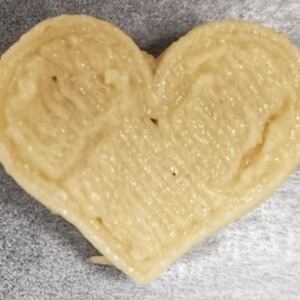Roughly 17 people die each day waiting for an organ transplant. One of the ways we could get more organs to patients who need them would be to simply make them from scratch by 3D printing them as living tissues on demand. Scientists have been able to 3D “bioprint” artificial human tissue for clinical research purposes for about two decades now—and over time we’ve inched closer and closer to the possibility of using this technology to make viable organs that could help keep people alive.
However, 3D printed organs would run into the same major problem as traditional organs—delivery. A new organ from a donor is only viable for a few hours as it’s rapidly transported from one location to another. It must be kept cool, but not too cool, as extremely low temperatures would effectively damage the cells and render the organ useless. 3D printed tissues face the same short shelf life.
A team of American scientists think they may have found a solution to this problem. In new findings published in the journal Matter, they report a new way to 3D print and preserve tissues in below-freezing conditions all while keeping them viable. The team calls their new technique “cryobioprinting.”
ADVERTISEMENT
“It’s always been that you have to print a tissue and use it right away,” study coauthor Y. Shrike Zhang, a biomedical engineer at Harvard University, told The Daily Beast. “This limits the ability for these constructs to be stored and/or transported among locations. Back in 2017 we started to think, ‘Can we devise some ways that could make it possible to bioprint and simultaneously store the tissues?’”
In traditional 3D printing of tissues, a “bioink” comprised of living cells and mixed with a gelatin-like substance is basically applied to a surface layer by layer, until you get the tissue structure you’re looking for. Cryobioprinting works much the same way, except that the bioink is printed onto a cold plate, at -20 degrees Celsius.
What’s especially novel is that the new bioink Zhang and his team developed freezes within milliseconds of being printed, so a 3D tissue structure is built without any fear that it might lose its shape. This means that very intricate and complex tissues can be developed over time—opening the door to the bioprinting of whole organs that are supposed to fulfill a wide array of physiological functions.
In order to ensure that these new tissues can withstand freezing temperatures safely, Zhang and his team applied dimethylsulfoxide and various sugars to the bioink. “They have been long used in conventional cryogenic storage for cells and tissues, but their integration into a bioink design has not been done before,” said Zhang.
Over the course of the study, the researchers demonstrated that the tissues could be safely frozen for at least three months before being thawed and brought back to life. The cells in the tissues proved to be as functional and as healthy as they would have been under normal conditions.
This is a very early development in the world of bioprinting. Zhang readily admits that many more in-depth studies are needed before we’re ready to 3D print a working human organ, much less freeze one and revive it. At the very least, however, this new breakthrough will make it much easier for clinical scientists to experiment with 3D tissues and find ways to get us closer to the goal of using 3D printed organs to one day save the lives of those in need of an organ transplant.






